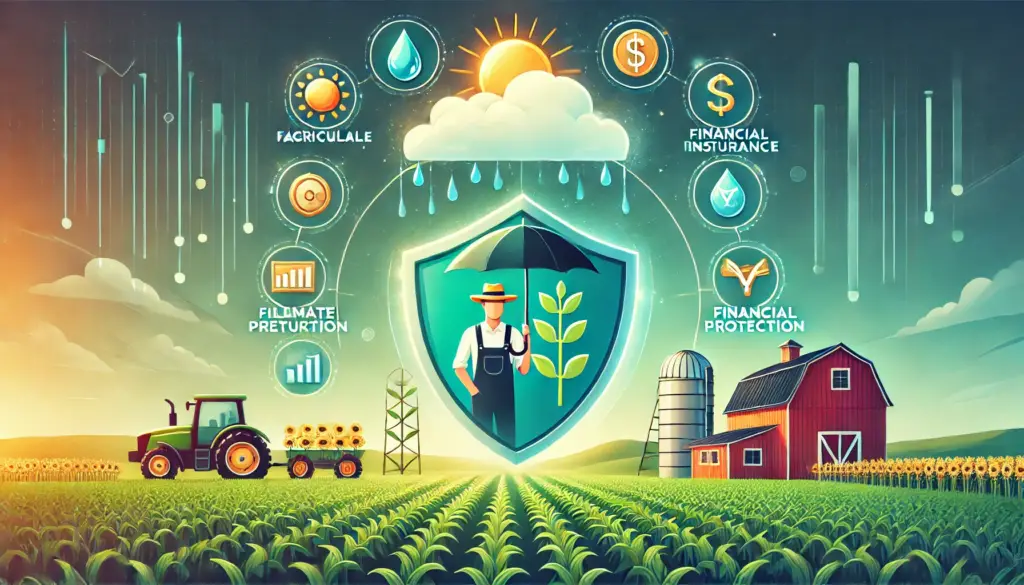
Agriculture and Crop Insurance: Safeguarding Farmers Against Unpredictable Risks
Agriculture is the backbone of economies worldwide, but it is also one of the most vulnerable sectors to climate change and unpredictable weather patterns. To mitigate these risks, agriculture and crop insurance has emerged as a vital tool for farmers, ensuring their livelihoods remain secure even during adverse conditions.
This article explores the concept, advantages, and disadvantages of agriculture and crop insurance, helping farmers and stakeholders make informed decisions.
What is Agriculture and Crop Insurance?
Agriculture and crop insurance provide financial protection to farmers against losses caused by natural disasters, pests, diseases, or market fluctuations. These policies compensate for lost yield, damaged crops, or additional expenses incurred due to unforeseen events.
Farmers pay premiums based on their risk exposure, crop type, and geographic location, enabling them to secure their investments in farming.
Advantages of Agriculture and Crop Insurance
1. Protection Against Weather Risks
Natural calamities like droughts, floods, hailstorms, and cyclones can devastate crops. Insurance ensures farmers receive compensation, reducing the financial impact of such events.
2. Financial Stability for Farmers
Crop insurance provides farmers with financial security, allowing them to recover from losses and continue farming operations without incurring heavy debts.
3. Encourages Agricultural Investments
Knowing their crops are insured encourages farmers to adopt modern techniques, purchase quality seeds, and invest in sustainable farming practices.
Advertisements
4. Support During Market Price Fluctuations
Some crop insurance policies cover price fluctuations, ensuring farmers receive fair compensation even when market prices drop unexpectedly.
5. Promotes Food Security
By supporting farmers in times of crisis, crop insurance contributes to a stable food supply and reduces the risk of food shortages.
6. Government Subsidies
In many countries, governments subsidize premiums, making crop insurance affordable for small and marginal farmers.
Disadvantages of Agriculture and Crop Insurance
1. High Premium Costs for Some Farmers
Despite subsidies, premiums can still be costly for farmers with limited financial resources, particularly for high-risk crops.
2. Delayed Compensation
Farmers may face delays in claim processing, leaving them financially strained during critical recovery periods.
3. Complex Terms and Conditions
Insurance policies often involve technical language and exclusions, making it challenging for farmers to understand their coverage.
4. Limited Coverage Scope
Not all types of losses are covered. For example, losses due to negligence, poor farming practices, or certain natural events might be excluded.
5. Dependency on Accurate Data
Crop insurance heavily relies on accurate data for weather, soil conditions, and crop yields. Errors in data collection can lead to disputes or inadequate compensation.
Advertisements
6. Inequitable Distribution of Benefits
Large-scale farmers often benefit more from crop insurance than small-scale farmers, who may not have access to sufficient resources to pay premiums.
How to Choose the Right Agriculture and Crop Insurance Policy
- Understand Coverage Options: Review policies to ensure coverage includes major risks in your region, such as floods or droughts.
- Check Premium Affordability: Compare plans to find one with premiums that suit your financial situation.
- Look for Government Subsidies: Explore government-sponsored schemes that reduce premium costs for small and marginal farmers.
- Research the Claim Process: Opt for insurers with efficient claim settlement processes to avoid delays.
Conclusion
Agriculture and crop insurance are crucial tools for safeguarding farmers against financial losses caused by unpredictable risks. While the advantages include financial stability, protection against natural disasters, and support for food security, the drawbacks such as high costs and delayed compensation cannot be ignored.
Farmers must carefully assess their needs and available options to choose the most suitable insurance plan. Governments and insurers should also work together to make crop insurance more accessible and effective, ensuring that agriculture remains resilient in the face of growing climate challenges.
Advertisements



